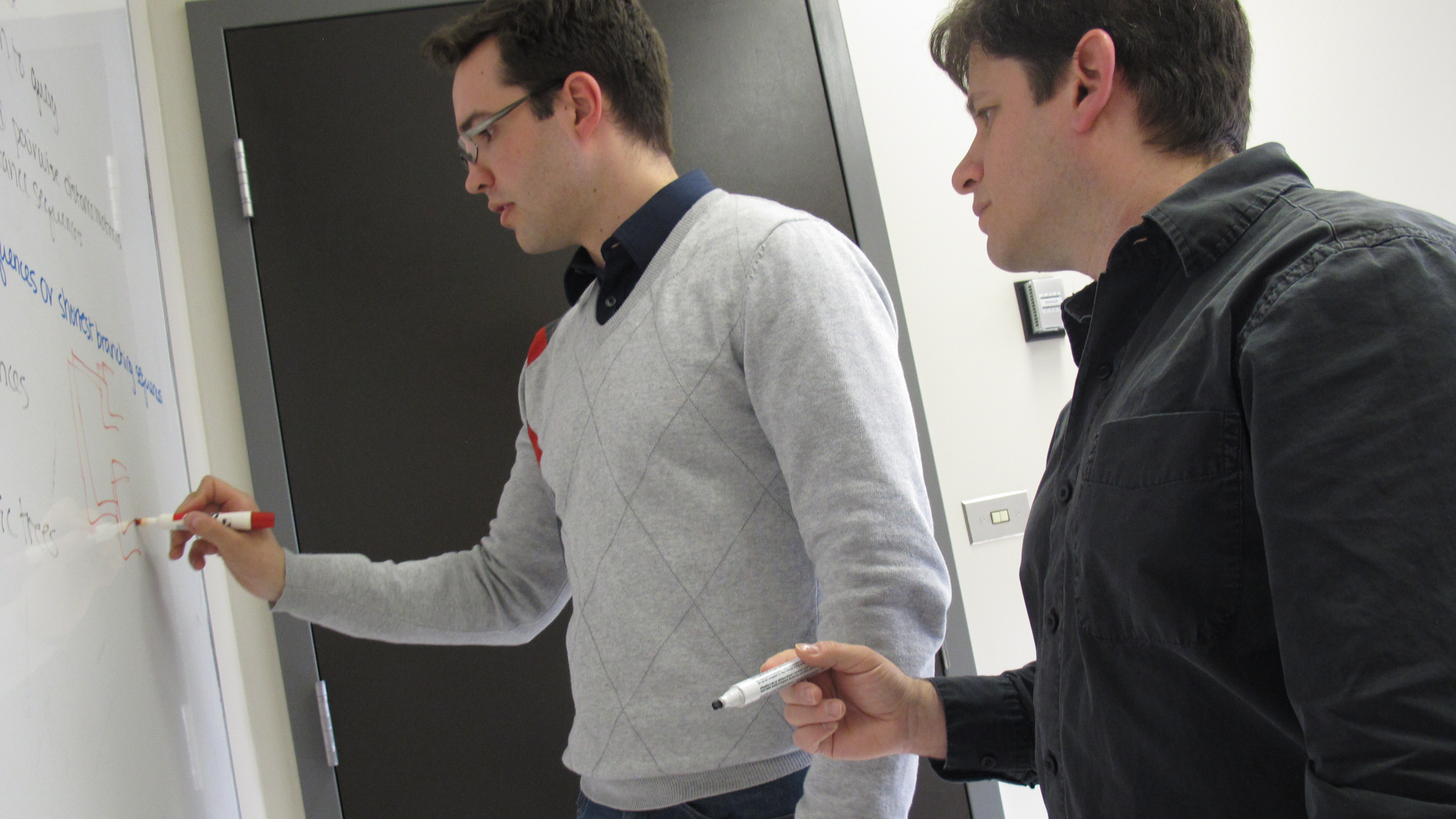
Alexander Schlacht (left) and Joel Dacks
Cell biologists are one step closer to understanding cellular evolution with the discovery of a new protein complex that is approximately two billion years old.
UAlberta researchers Joel Dacks and Alexander Schlacht have teamed up with Margaret Robinson, Jennifer Hirst and other cell biologists at the University of Cambridge to identify the ancient protein complex. Dubbed TSET, it is comprised of the protein subunits TPLATE, TSPOON, TCUP and TSAUCER. This research was published in eLife open-source journal on May 27.
TSET is related to adaptin protein (AP) complexes that work in the cell membrane to traffic molecules in and out of the cell and are generally comprised of four subunits. They can contribute to the development of diseases like Alzheimer's or blindness. There are five known adaptin complexes, including AP5, which Dacks and Robinson identified in 2011.
More research is required to determine the exact function of TSET but the authors believe that it is a "missing link" in cell membrane function and works with the adaptin complexes and COPI, a complex that works early in the process of bringing molecules out of the cell.
Though this is the first time TSET has been identified in its entirety, fragments of the complex have puzzled researchers for years: the TPLATE subunit was identified in plant cells approximately five years ago, and a protein in human cells that is linked to neural function, FCHO, which is a remnant descendent of the once complete TSET complex.
A two-billion-year-old secret
The discovery of TSET began when Robinson, Hirst and colleagues created a tool that searches for related proteins based on their physical shape rather than their amino acid composition. Their method proved fruitful: they found the structure in multicellular plants and single cell amoeba, two very distantly related organisms.
"You can determine the common ancestry of proteins by how close in sequence their amino acids are, but that only goes so far," explains Schlacht, co-author and PhD student in Dacks' lab. "Once the amino acids change enough, you won't be able to pick up any really distant cousins. If you look at the shape of the protein, it tends to be much more conserved than the actual sequence of amino acids."
Robinson and Hirst reached out to Dacks and Schlacht to help map TSET's evolutionary history.
First, they had to determine how widespread the complex is. Schlacht used HMMer, a tool that analyzes a pre-existing database of genomes for matching residues of protein complexes or amino acids. HMMer creates a statistical model that is more sensitive than searching based on the absolute identity of the amino acid composition.
Dacks and Schlacht then compared the AP complexes at the genetic level to determine where TSET sits in the evolutionary model. All five complexes are derived from a common ancestor and the subunits should have the same evolutionary history, so Dacks and Schlacht were able to treat the four subunits as one long gene in order to increase the sensitivity of the test.
"While individual voices might be drowned out by background noise, this approach allows you to hear four quiet voices singing the same song," says Dacks, the Canada Research Chair in Evolutionary Cell Biology. "Individual analysis of the different proteins didn't really tell us anything but when we treated them as a single unit, we got a solid result."
Results suggest that TSET evolved before some of the other adaptins, meaning it may one of the oldest complexes involved in the membrane trafficking process, an important faculty for overall models of cellular evolution and for understanding human proteins.
"In order to properly map out the series of events that took place [in the evolutionary process], you have to know all the pieces," says Dacks. "This is a new piece. We have to go back and rethink the models of how the cell would have evolved."